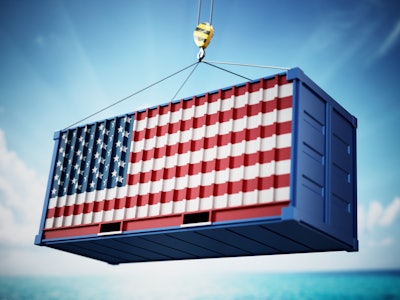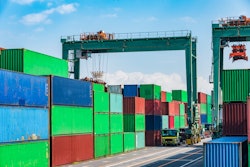
China Plus One is predicted to emerge in a big way come 2024, and competition and shrinking profits will necessitate market consolidation in 2024, according to predictions outlined by Container xChange.
In fact, the shipping industry is predicted to grapple with persistently reduced demand and oversupply, potentially leading to fiercer competition, further reduced profits, and possible market consolidation. Blank sailings are expected to rise in response to market volatility, while imbalanced container availability, driven by economic crises, may continue in certain regions.
Plus, there is an expected increase in trade between China and Southeast Asia, India, and other similar destinations.
The "China Plus One" strategy is anticipated to show more prominent trends and signs `ZAZ~ZAQS in 2024, with companies seeking additional containers to diversify their supply chains, according to Christian Roeloffs, CEO of Container xChange.
Key takeaways:
- In the wake of longer-term factors such as inflation, increased interest rates, and a shift in consumer spending patterns from goods to services, cautious consumer spending in 2023 is expected to extend into 2024. This caution is anticipated to impact the demand for imported manufactured products, with implications for the container market.
- The surge in deliveries, including "Megamaxes" and "Neopanamaxes," may lead to intense competition, reduced profits, and potential mergers and acquisitions. Carriers, particularly in North America, are navigating a delicate balance between government-driven demand and rising interest rates. Overordering of ships during the economic boom could create overcapacity, turning 2023's profits into 2024's losses. The sector is projected to face challenges to restore supply and demand equilibrium until 2026.
- Geopolitical uncertainties in 2023, including conflicts in Ukraine, Taiwan, and Israel, significantly impacted the shipping industry. These effects are expected to persist in 2024, with potential consequences for trade routes. The Russia-Ukraine conflict led to the closure of Black Sea ports, causing congestion and delays in goods transportation. Potential conflicts in the Taiwan Strait and the Israel-Palestine region pose risks to key shipping routes, impacting trading in 2024 and beyond.
- Various factors, including ongoing trade tensions between the United States and China, rising labor costs, and concerns about potential future manufacturing disruptions, are driving companies to diversify away from China.
- The break of alliances marks a significant shift in the industry. The resulting less demand and oversupply may lead to heightened competitive pressures and lower profits. The industry could witness fierce competition for market share among carriers, potentially necessitating further rounds of mergers and acquisitions.
- Container line schedule reliability is improving, returning to pre-pandemic levels. Although global schedule reliability declined slightly in August 2023, the industry is on a positive trajectory.
- Blank sailings fluctuated in 2023 but are expected to increase in 2024 due to market volatility. Despite being more organized than in the previous year, blank sailings remain a strategy to stabilize market rates and manage demand patterns.
- Economic challenges in the Euro Zone contribute to imbalanced container trade, affecting container availability. The Container Availability Index indicates higher container burdens in ports like Rotterdam. As the Euro Zone grapples with an ongoing economic crisis, the region struggles with the challenge of surplus containers causing repositioning costs exceeding the asset cost.




















